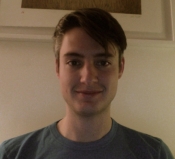A Historical Thinking Final Exam?
In my school, and across British Columbia, there has been a growing movement to reinvent, transform or in some cases, simply abandon final exams. This is shown by the recent removal of most Provincial Exams at the Grade 12 level. This change has been cheered by many, but also left others who wish to continue with end of year summative assessments frustrated at the lack of support and time which they had been afforded in the past. This post is not to debate the pedagogical value of formal final exams, but instead to explore other options that may allow students to demonstrate their competency in thinking historically, while also showing their grasp of the required content.
The history exams I have experience with, tend to blend a large number of multiple-choice questions with an essay component. The multiple-choice questions and the essay questions are largely designed for students to demonstrate their knowledge of the content of the course. This option focuses on remembering large amounts of information and leaves little room for incorporating historical thinking into the exam.
This has been a transitional year as I, and other teachers in my school, have attempted to blend historical thinking into their courses and now the final exams. For logistical reasons, multiple-choice responses are not fully disappearing from my final exam. Instead the multiple-choice questions I will be using draw from Charles Hou’s Begbie Contest. These questions utilize a wide variety of primary sources such as posters, quotes, political cartoons and paintings that students must use to answer multiple-choice questions. The Begbie format also offers paragraph response questions and essay questions that utilize a series of primary and secondary sources. (The Begbie Contest Society offers a CD-ROM that can be ordered which provides previous test questions.) This partially satisfies my goal to incorporate historical thinking into summative assessments, but I am interested in other options as well.
One such option was introduced to me this year at the Annual Meeting for the Historical Thinking Project in Toronto by one of the teacher presenters, Rachel Collishaw who teaches at Glebe Collegiate Institute in Ottawa. Rachel has developed a summative assessment, which involves a 10 minute primary source analysis interview. In this interview, students select two primary source documents and are given one at random from a preselected list. Students then use these documents to demonstrate their understanding of historical thinking concepts. Rachel has written about this assessment and its successes in OHASSTA’s Rapport and there is more information about this interview assessment, including the documents, rubrics and guiding questions on Rachel’s website.
Rachel’s idea of a summative interview provides a clear example of how teachers can assess their students’ ability to think historically while also demonstrating their understanding of the curriculum. My only concern with this method is amount of time involved, as in my school there is no exam period in which I could fit the approximately 150 interviews that would be necessary. Either way I plan to pilot this assessment next year with one of my classes. Thanks for the great idea Rachel! My question for other teachers is, do you have any other ideas about summative assessments that incorporate historical thinking concepts?


